For about 15 years, physicians and hospitals have been “encouraged” by the federal government to implement electronic health records (EHR) keeping. In spite of incentives and potential penalties, many independent practices chose to keep their patient records in the time-honored way – on hand-written, paper documents which were stored in wall-to-wall file rooms. Many ascribed to the old adage: “If it ain’t broke, don’t fix it.”
Such was the case with Doctors of Children, a pediatric practice in Lincoln, Nebraska which was launched in 1998 by Dr. Brent A. Willmon along with his nurse practitioner Kathy Carter. For 18 years, the practice used paper charts for patients and developed a reputation for healthcare excellence. During this time, technology got better and patient traffic increased.
When Dr. Willmon was joined by Dr. Stacy L. Houston along with several more clinical and administrative personnel, it became obvious that it was time to take the step to electronic health records keeping. This was in 2011 and for the next 5 years, Dr. Houston and her team researched the EHR products and companies that might be a good fit for this practice.
The office manager of Doctors of Children is Debbie Ideus and in her role she helped to manage this in-depth search for a compatible EHR platform. In a recent interview, she shared this experience.
Implementation of EHR: A Nightmare or Sweet Dream?
“Before we launched our EHR platform, I was very concerned about its implementation,” Ideus said, “We had used paper medical records for 18 years and this was a BIG change! However, we went through an exhaustive search of products, we tested 4 different EHR platforms and Dr. Houston spent 5 years researching EHRs!
“Our final choice was PCC and it has been a great decision for us. We were looking for a pediatric-based EHR and there was no other company, except for PCC, in this space. Once Dr. Houston discovered PCC, she felt their mission and their philosophy matched ours. She had done research on how they handled customer service and other clients told her that this is an area where PCC excelled.
In many cases, after the sales process is completed, some technology companies leave customers to their own devices for much of the implementation of the system. In the case of Doctors of Children, the implementation phase was seamless.
“PCC was wonderful,” said Ideus. “We had daily and weekly calls where they gave us ‘assignments,’ which were processed through Basecamp. It was a lot of work for the doctors and the staff, I must admit, but in this implementation phase we had all of the resources we needed to succeed.
“Throughout this process, the PCC staff was exactly what we expected. They were top-notch!”
What Other Practices Can Learn From This Experience
An office manager of a busy pediatric practice has little time to complete all of his/her day-to-day tasks, much less having the bandwidth to change over to a completely new practice management software platform. Debbie Ideus has some advice for other practices.
“It will be much more time-consuming than you might think,” she said. “And everyone charged with getting the information into the system and later managing this process must be totally committed to it.
“The biggest challenge that I remember about the entire process was transitioning from paper-based charts to the electronic versions. The PCC team warned us about this, but I guess we weren’t listening as closely as we should have! We tried scanning the charts as we made appointments and this did not work because we couldn’t keep up with the volume.
“The PCC team also warned us that we wouldn’t be able to see as many patients in the beginning, but with their help, we never really saw huge decreases in patient traffic.”
“The best feature of the platform for me is the auto-post. This simple function allows us to gain 4 to 6 hours a week in staff productivity!”
Debbie Ideus
A Favorite Feature for the Office Manager
The PCC platform is designed to help both the medical and business sides of a pediatric practice to be more efficient in the delivery and management of care to patients. While Drs. Willmon and Houston realize the medical efficiencies of this software, as the practice manager, Ideus is acutely aware of the financial management tools of the platform.
“The best feature of the platform for me is the ‘auto-post,’” she said. “For example, when the check from an insurance company arrives at our office, we are able to push one button and the proceeds are automatically disbursed to everyone (sometime hundreds of patents) who is due the payment. This is a far cry from the old days, when we had to manually enter every payment for every patient. This simple function allows us to gain 4 to 6 hours a week in staff productivity!
“Our goal for changing to an electronic system was to identify which patients were due for regular care. For example, we wanted to know who was due for well-checks who was missing their immunizations, and so forth. We are still learning how to accomplish this goal but PCC is sticking with us through the process and we are getting better and better as time goes by.”



